Academic Publishing insists on taking academic exchange and publication as the main line, carrying out comprehensive management based on science and technology, and fully exploring excellent international publishing resources. Within 5 years, it will form a strategic framework and scale with science (S), technology (T), medicine (M), education (E), and humanities and arts (H) as the main publishing fields. Academic Publishing is headquartered in Singapore and based in Malaysia, with the United States and China providing the main scientific and academic resources. At the same time, it has established long-term good cooperative relations with other publishing companies, scientific research communities, and academic organizations in more than a dozen countries and regions. Academic Publishing uses English and Chinese as its main publishing languages, mainly publishing books, journals, and conference papers in print and online. The vast majority of publications follow the international open access policy, providing stable and long-term quality and professional publications. With the joint efforts of the expert team and our professional editorial team, our publications will gradually be indexed by international databases in stages to provide convenient and professional retrieval for various scholars. At the same time, manuscripts we accept will be subject to the peer review principle, and cutting-edge and innovative research articles will be preferentially accepted for peer reference and discussion. All kinds of our publications are welcome for peer to contribute, access, and download.
Vol. 1 No. 1 (2025)
-
 Open Access
Open AccessReview
Article ID: 2538
“Stumbling blocks” in the translation of technical documentationby Oksana Bielykh
Language Exploration, Vol.1, No.1, 2025;
The objective of this study is to clarify the notion of “technical documentation” and explore the challenges and strategies involved in translating this type of text. Technical documentation is crucial in helping customers understand how to use the product effectively that is why it should be well-structured, allowing users to find the information they need quickly and easily. Examples of technical writing include technical manuals, operating instructions, scientific books, monographs, academic papers and articles, and patent translations. However, several obstacles can impede the translation process, potentially resulting in inaccuracies or misunderstandings. Common translation difficulties include untranslatable words, multiple-word meanings, differences in grammatical and syntactic systems, technical and specialized terminology, and “false friends.” The process of translation of such texts is intricate, involving the transfer of information from one language to another while considering cultural, linguistic, and contextual factors. While translating technical texts, the translator may encounter various obstacles, such as linguistic challenges, source text issues, expertise gaps, and realia. Improving the effectiveness of translating technical documentation involves a combination of best translation practices. Effective communication and collaborative efforts are crucial elements for project success. It is also important for professional translators to be vigilant and use the right resources to avoid common pitfalls and deliver high-quality. By combining these strategies, you can enhance the efficiency and accuracy of translating technical documentation, ensuring that the information is effectively communicated to a global audience.
show more




